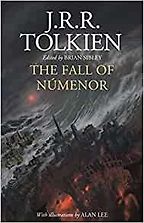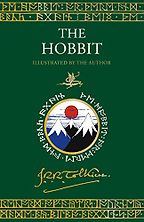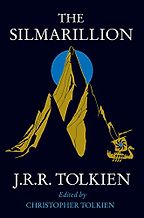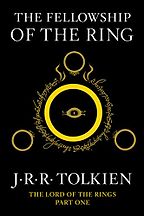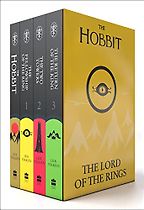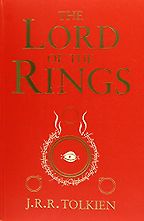Lord of the Rings Books
Last updated: April 24, 2024
The Lord of the Rings, British author JRR Tolkien's epic fantasy, has spawned an array of books since it was first published in the early 1950s. It's probably best to read the Lord of the Rings books in the order we've listed them here. These are books that children can start reading around age 11, starting with The Hobbit. If you're buying the books as a gift, one option is a LOTR box set; some are beautifully illustrated.
Tolkien's epic tale is very much in the vein of oral storytelling and listening to the Lord of the Rings as audiobooks is worth considering. There are a variety of narrators to choose from, but most recently the BAFTA award-winning actor and director Andy Serkis—who plays Gollum in the blockbuster movies—has had a go.
Many of the new books you'll see coming out are based on stories published after Tolkien's death. Many appear in The Silmarillion, though Tolkien's son Christopher (1924-2020) also published other stories from his father's notebooks. Most of Tolkien's books—including the most recent, The Fall of Númenor—are illustrated by Alan Lee. As well as being a talented artist, Lee knew Christopher Tolkien well and advised New Zealand film director Peter Jackson on the LOTR and Hobbit movies.
The Fall of Númenor
by Alan Lee, Brian Sibley (Editor) & J R R Tolkien
The Fall of Númenor is a collection of Tolkien's writings on the Second Age of Middle-earth, put together by British writer and Tolkien expert Brian Sibley and illustrated by Alan Lee. This is the period before the adventures of The Hobbit and The Lord of the Rings (which take place in the Third Age of Middle-earth). Númenor is the island where the Dúnedain live and from whom Aragorn—the king in The Return of the King—is descended.
The book may be distantly connected to the Amazon Prime series The Rings of Power, also set in the Second Age of Middle-earth.
The Hobbit
by J R R Tolkien
The Hobbit introduces the creature known as a hobbit, about half the height of a human, beardless, and with hairy feet. In particular, the book introduces the figure of Bilbo Baggins, a hobbit in his 50s who enjoys eating, smoking his pipe and taking it easy, and who is very emphatically NOT in search of an adventure. Unfortunately, a visit from Gandalf, a wizard, and 13 dwarves changes all that. Mr Baggins is dragged off from his comfortable home on a quest to recover a treasure.
The Hobbit is fun and light-hearted but has a slightly two-dimensional feel—featuring elves, goblins and dragons: creatures you might expect in a magical story for kids. It does not yet have the epic and 'real' feel of The Lord of the Rings. However, it's in The Hobbit that a magical ring first makes its appearance, as does the creature who is obsessed with it—called Gollum because of the strange noise he makes in his throat when he talks. It's clear that the ring's power and the role it would play in the narrative of The Lord of the Rings had yet to take shape in Tolkien's mind.
The Silmarillion
by Christopher Tolkien (editor) & J R R Tolkien
This paperback edition of The Silmarillion, published in 2001, features JRR Tolkien's drawing on the front cover and an extremely useful index of names at the back. You'll find yourself consulting it frequently.
The Two Towers (Lord of the Rings Part Two)
by J R R Tolkien
Starting out with a two-age synopsis of Part One (The Fellowship of the Ring) this paperback edition of The Two Towers includes 7 pages of maps which are very useful at this stage of the story, where the members of the fellowship split.
The Fellowship of the Ring (Lord of the Rings Part One)
by J R R Tolkien
This paperback edition of The Fellowship of the Ring includes not only the story and maps, but also an enlightening foreword by JRR Tolkien himself, which he wrote for the second edition.
The Hobbit & The Lord of the Rings Box Set
by J R R Tolkien
If you're looking for a good, reasonably priced Lord of the Rings boxset, this is a good choice. The cover images of each book are by JRR Tolkien himself and the books include maps by Christopher Tolkien, his son. At the end of The Return of the King, there is also an index (useful as not only are there many characters in Lord of the Rings, but many have more than one name).
The Lord of the Rings
by J R R Tolkien
Tolkien published The Lord of the Rings in three parts: The Fellowship of the Ring, The Two Towers (both in 1954) and The Return of the King (1955). This edition allows you to buy all three of them as a single volume. At more than 1,100 pages, it's a large book and perhaps easier to read on a Kindle. Perhaps even better is to buy the whole Lord of the Rings epic as a boxset, whether plain or one of the beautifully illustrated editions.
